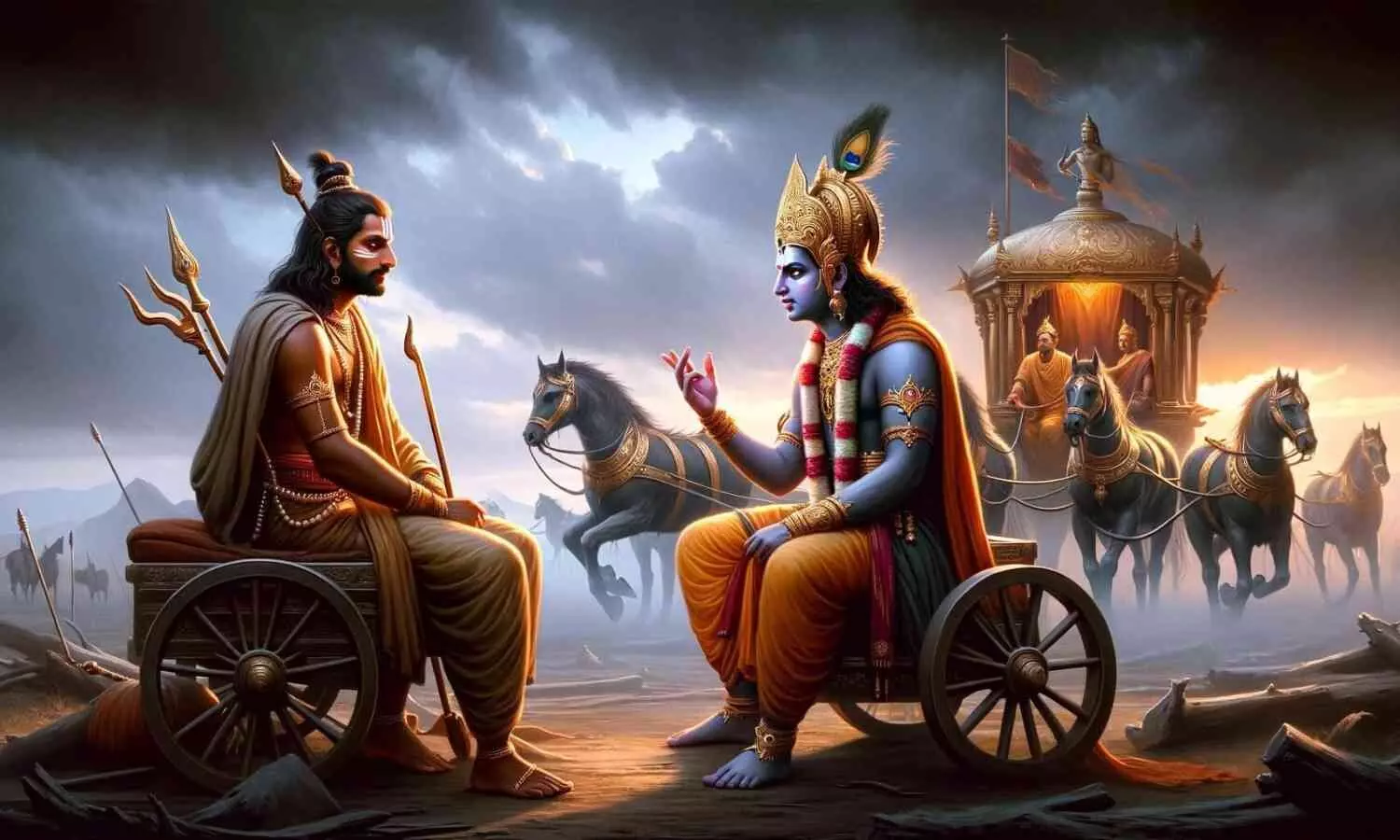Finding out about the Connection Between Bhagavad Gita and Cognitive Behavioural Therapy

Finding out about the Connection Between Bhagavad Gita and Cognitive Behavioural Therapy
Learning how the principles of Cognitive Behavioural Therapy (CBT) align with the teachings of the Bhagavad Gita. Learn how this ancient text offers timeless insights for managing stress, anxiety, and emotional regulation in today’s fast-paced world.
Introduction
Change your thoughts and you change your world. Thought plays an essential role in human life and they are built due to our cognitive ability. Cognitive ability is a mental state to understand our thought patterns , process them ,and solve problems. When we read, listen , see or touch something, our brain gets signals and it understands and processes the information and sends the response. In the competitive world ,Cognitive ability is required a lot to solve real world problems but it is becoming very challenging.
Background
In 1970, Donald MEICHENBAUM and a few other clinicians developed Cognitive behaviour therapy through an integration of behaviour therapy with cognitive psychology research.Number of clinical trials were executed to scientifically test the effectiveness of Cognitive Behaviour Therapy on various psychological disorders. This therapy is based on a cognitive model and the goal of this therapy is to identify distorted thinking , reshape beliefs, change thought patterns and solve real world problems within a limited time by focusing on the present.
About Cognitive Behavioural Therapy
Person loses their thinking ability when they are in stress. Their thoughts become distorted. Cognitive Behavioural therapy helps the person to identify those distorted thoughts and do analysis whether these thoughts are realistic or not.People learn how to make changes in these distorted thoughts.This therapy also helps in the emotional regulation.An emotional regulation is a process when an individual influences their emotions , how they experience and express their feelings.Emotional regulation comprises both negative and positive emotions.It also teaches us how to operate , control and strengthen our emotions. There are few strategies useful for Emotional Regulation like Introspection, Self Awareness, Self regulation , Value engagement , Mindfulness, Cognitive reappraisal , adaptability , Positive Mindset, Self compassion, Emotional Support.
Link between Bhagavad Gita and Cognitive Behavioural Techniques
As the world progresses and innovative technologies are developed, anxiety , depression and other stress related mental disorders have been increasing too. In today’s competitive market, peer pressure , and pursuit of a high standard of living, people have lost sight of peace of mind. Everyone has the aspiration to buy a big house, a six figure salary , wear branded clothes , and drive a luxury car. The stress is now probing people to go towards spirituality and has an leveraging effect on cognitive behavioural therapy. Mahabharata dated back to 5000 BC consisting of 100,000 verses narrates the conflict between the two groups of cousins.The Kauravas and the Pandavas.
The Pandavas and their supporters defeated kauravas with the help of Krishna in the battlefield of Kurukshetra.The epic is divided into 18 chapters and 701 verses. “Arjun Vishad Yoga” , the first chapter describes the sorrow and distress of Arjuna while ‘Moksha Sanyasa Yoga’ 18th chapter talks about renunciation, freedom from fear,sorrow and distress after the successful session of Cognitive Behavioural Therapy by Krishna.Arjun’s unwillingness to destroy his mentors during the war, guilt ,doubt and attachment to his loved ones,contemplates withdrawing from the battlefield.
Krishna guided him to the right course of action to help him fulfill his destiny in the war. The interaction between The Krishna and The Arjun comprises Cognitive Behaviour Therapy principles in the Bhagwat Gita.The Bhagavad Gita offers deep insights into the principle of cause and effect, highlights personal responsibility for one’s actions and their outcomes. It addresses problems at the very root of human thought, believing that improving a person’s mindset naturally leads to better actions and results.
In the Gita, Arjuna can be seen as a patient struggling with doubt and despair, while Krishna acts as his therapist. Krishna delivers a powerful single-session therapy to Arjuna, lasting just 2-4 hours, guiding him toward clarity and purpose.The teachings of the Bhagavad Gita, delivered by Krishna, guide us toward making the right decisions and taking the correct course of action. Similarly, a Cognitive Behavioral Therapy (CBT) therapist helps patients address anxiety and conflicts, offering solutions to manage symptoms while setting the foundation for long-term recovery. In many ways, Krishna's resolution of Arjuna's inner conflict mirrors the goals of CBT.
This text explores the parallels between the Gita and Cognitive Behavioural Techniques and suggests incorporating principles from the Gita into modern Cognitive Behavioural Techniques practices to enhance its effectiveness and impact.
Conclusion - In the distress moment, we all find ourselves in the position of Arjuna,seeking a Krishna to guide us out of our troubles. The Bhagavad Gita enlightens us that problems and suffering are part of life and it arises due to lack of harmony and balance in life. It describes how the mind moves from a state of anxiety and despair to one of clarity and mature thinking. The communication between Krishna and Arjuna exhibits Krishna's role as a therapist, who is offering wisdom and insight, while Arjuna displays the qualities of an ideal patient—openness, trust, devotion, and complete willingness to learn. These essential qualities, combined with the therapist's skills, are essential for achieving effective and timely results in a Cognitive Behavioural Therapy session.

